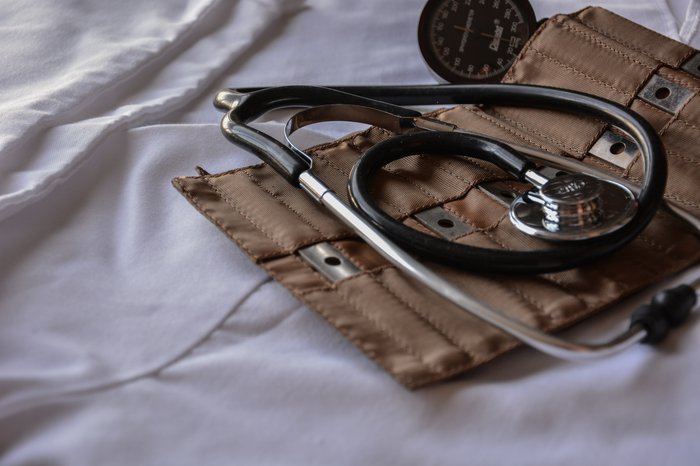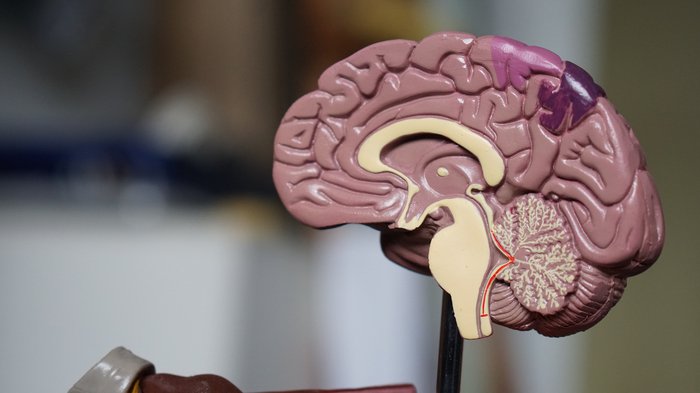Health inequalities: how does stress change our bodies?
You might not have heard of "allostatic load" before, but scientists are learning more and more about how chronic stress adds to the ‘wear and tear’ on our bodies, the way it differs between ethnicities and leads to health inequality.
It’s well-known that our environment impacts our health and wellbeing, and that there are health inequalities according to both socioeconomic status and ethnicity related to financial insecurity, instability, and discrimination.
These social factors are hugely important for people living with blood cancer because they affect the way we experience ill-health, and how well we can access the resources we need both to manage symptoms and to heal.
For decades, research in the social sciences has shown us that social factors that are more likely to impact certain groups can lead to poorer outcomes and experiences of the healthcare system for those groups as a whole – for instance among Black people with blood cancer.
While 62% of white respondents only had to speak to their GP once or twice before being diagnosed with blood cancer, the same could be said for only 42% of Black respondents.
Results from the 2021 National Cancer Patient Experience Survey exemplify this: while 77% of white blood cancer patients felt they were involved as much as they wanted to be in decisions about their treatment, only 66% of Black blood cancer patients felt the same. There’s similar disparity in how long it takes to be diagnosed with blood cancer. While 62% of white respondents only had to speak to their GP once or twice before being diagnosed with blood cancer, the same could be said for only 42% of Black respondents. The number of respondents of non-white ethnicities was relatively low, so these figures need to be interpreted with care and more research in this area needs to be done. For now, they’re a useful indication of how health inequalities are expressed and where they’re felt in our community.

Often, health inequalities arise from differences in access to quality care and medicines – Photo by Marcelo Leal on Unsplash
iOften, health inequalities arise from differences in access to quality care and medicines, direct discrimination during encounters with healthcare professionals, racial bias in the assessment of pain (whereby Black patients’ pain is dismissed), the use of white bodies as 'standard’ when teaching about symptoms, poor or non-existent translation services and practices, a lack of robust data monitoring on ethnicity in the NHS, and in indirect discrimination in clinical trials, among a host of other factors. These affect health outcomes for people in minoritised ethnic communities – or people of ethnicities who are generally marginalised due to the way our society is structured and how power is distributed, rather than because they’re in the ‘minority’. We understand these reasons for health inequalities relatively well. It’s less well-known, however, how socioeconomic marginalisation impacts us on a biological level. Research coming out of North America may help us to better understand this.
The impact of inequity on the body
In the past few decades, researchers have discovered one of the ways that social factors like discrimination and instability fundamentally change our bodies. It’s through a process called allostasis, which leads to allostatic load, or the ‘wear and tear’ on our bodies caused by chronic stress. When we’re exposed to stressors, our bodies respond by activating certain neural mechanisms to help us to adapt and cope with life-threatening situations. When we’re overstimulated over long periods it leads to increased allostatic load, which can result in disease of the cardiovascular, immune, and central nervous systems, as well as abnormal brain function. In sum: the more stress, the higher our allostatic load, and therefore the poorer our health outcomes.
There’s evidence that allostatic load leads to poorer outcomes for people with solid cancers, and in April a study was published indicating that this might also be the case for people living with multiple myeloma. This is one of the first studies of allostatic load and blood cancer, and much more research needs to be done in this area, but this study will hopefully lead to further investigation.

Allostasis is a neural mechanism activated to deal with stress – Photo by Robina Weermeijer on Unsplash
iHistory, ethnicity, and health inequalities
Most of the research on the relationship between allostatic load and health outcomes has been carried out in the United States and Canada, so it’s not a perfect comparison to our community in the UK. Yet American studies have found that high levels of hostility and racial discrimination are linked to high allostatic loads, with Black participants having the highest allostatic loads compared to all other groups. Canadian research – mostly conducted among Indigenous peoples – has shown that, even in childhood, exposure to racial discrimination predicts higher allostatic load in adulthood. These findings may help to explain differences in health outcomes for people in minoritised ethnic communities in the UK.
In the UK, our colonial histories and the unequal structure of our society mean that Black British people are more likely to live in the most deprived areas, to be subject to immigration control, to be disproportionately targeted by police practices, and to experience discrimination in their day to day lives. If the results of the North American studies are applicable here, these extreme stressors might mean that Black people in the UK may have a relatively greater risk of high allostatic load.
Celebrated theorists, authors, and historians like Stuart Hall, David Olusoga, and Paul Gilroy have helped us to better understand how Black British history has shaped contemporary society, and the experience of being Black and British today. These historical narratives implicate all of us in the UK, but are experienced and articulated in particular ways for Black communities, such as in the immigration movements of the 20th century, legacies of resistance against colonialism and colonial violence, through to today’s calls to dismantle systems of oppression and racism. Contemporary marginalisation and discrimination – triggers of allostatic load – are inherently linked to these histories. While much more research needs to be done on allostatic load in the UK, looking at the present-day expressions of this history with an understanding of how social factors influence our health could help us to better understand the nature of health inequalities.
What we’re doing
Understanding and addressing health inequalities is one of our strategic priorities for the next 5 years at Blood Cancer UK. As part of this work, we’re identifying which social factors are related to poor health outcomes for people with blood cancer, and which groups are most likely to experience these social factors. First, we’re looking at ethnicity by conducting a comprehensive review of literature to evaluate which communities are at a greater risk of getting blood cancer, which communities are at a higher risk of poorer outcomes, and which communities are likely to report poorer experiences of care. We’re also analysing the available national data to help further our understanding in this area, including the results of the 2021 National Cancer Patient Experience Survey. Phase two of the project will be directed by the recommendations which arise from the literature review and will include engagement from healthcare professionals. We hope that by identifying communities at greatest risk, we can identify the social factors we need to focus on and, in turn, we can improve the work we do to reduce health inequalities.
What you can do
Everything we do starts with our community of people affected by blood cancer. As we work towards reducing health inequalities, we’ll be looking for your help in shaping our priorities to make sure our work is aligned with your needs. To receive updates on this, you can follow us on Twitter and sign up to our newsletter.
In the meantime, we know that some people in our community might be experiencing a high level of stress, and that this might be exacerbated this winter. We’re here to talk if you’re worried, and you can also connect with other people affected by blood cancer on our online community forum.

Talk to other people affected by blood cancer
Hear from and connect with people who understand.

